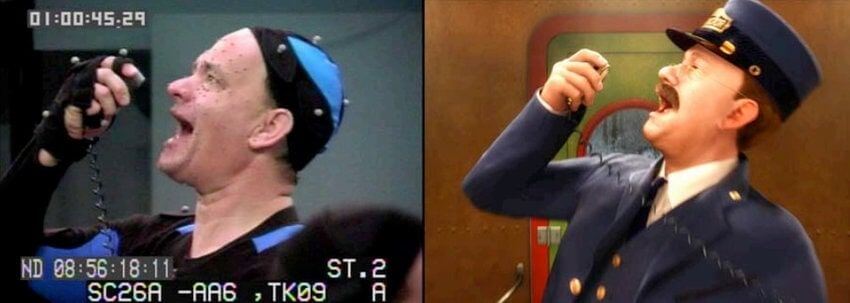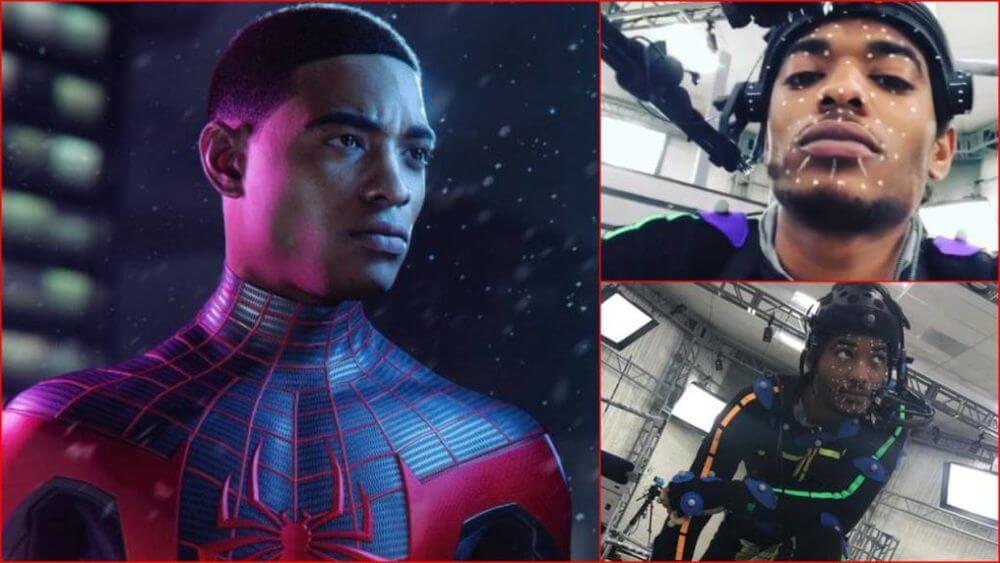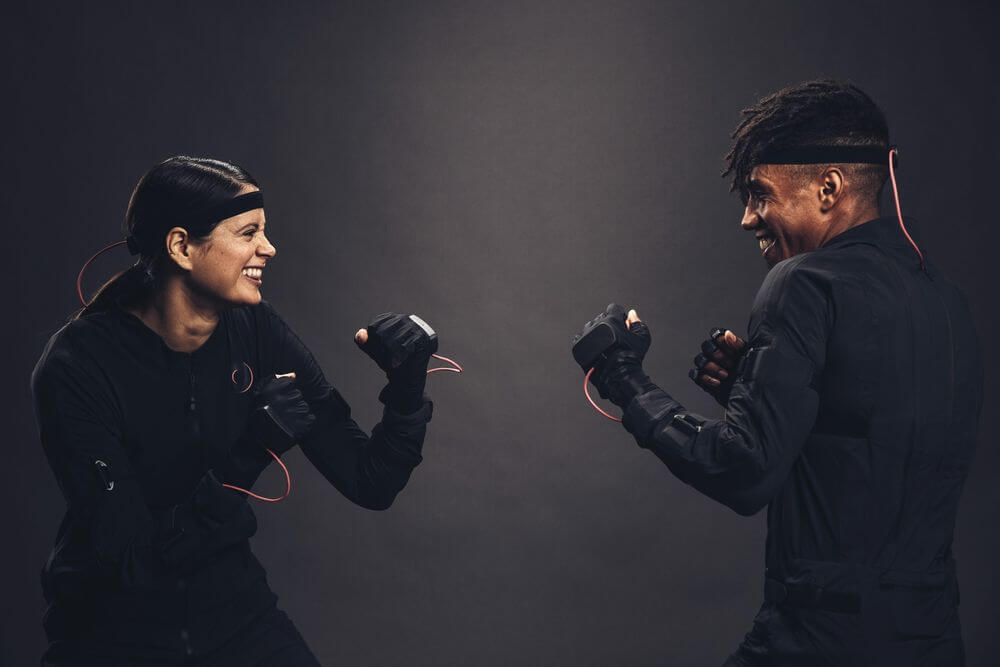.jpg)
Motion capture was traditionally only available to studios with big budgets. But in the last ten years, all that’s changed. With the cost of technology decreasing (while the range of options increases), there are plenty of setups and combinations that you can use to record human motion. We’ll cover it all in this article, from Hollywood solutions like Optitrack and Vicon to popular, affordable setups! But first, let’s jump into what types of mocap systems best suit your 3D animation needs.
What type of motion capture should you choose?
There are two main types of motion capture technology; inertial and optical. An optical setup is usually used on high-budget productions (like Lord of the Rings) that require highly detailed animation data. Inertial systems, in comparison, are a newer technology and are far cheaper and more convenient to use. It’s important to note that all motion capture systems need their proprietary software to operate. This can have a surprising impact on usability and price.
Optical Motion Capture System Overview

Also known as marker-based tracking, optical mocap relies on high-end cameras to track motion. You need a reasonably large production studio and a few specialists to operate the equipment and hardware. The performance capture is highly accurate with small error occurrence, but a generalist animator wouldn’t be able to use the software without training. While reflective markers are often used, a few solutions offer markerless motion capture. A full-fledged optical mocap setup typically costs between $25K and $500k.
Used on:
- Feature films
- High-production value TV series
- Triple A games
- Virtual production
- Robotics and industrial applications and research
Inertial Motion Capture System Overview

Inertial motion capture uses internal gyroscopes placed on the body to translate movement into animation data. The motion capture can be acted by the animator themselves or by a dedicated actor. The setup is quick and can be learned by a mid-level 3D artist in a few hours. Costs start at around $2k for a basic setup and rise to around $25k depending on the software and mocap tool provider.
Used on:
- 3D Video games
- Indie projects of all kinds
- Animated real time live streaming
- Previs for production (live-action or 3D)
- Virtual production
- Virtual reality
Hybrid Mocap Systems
Hybrid motion capture systems are rare but are gaining popularity as more and more studios turn to virtual production and virtual events. Virtual events consist either of a 3D world entirely or include live-action footage. The human movement is recorded using inertial motion capture, while optical motion capture is used to track the movement objects in a scene (like props or environmental elements) as well as adding a extra layer of data fidelity to the mocap (for example to ensure correct global positioning of the performer throughout the production). The optical motion capture is usually marker-based and doesn’t integrate with other mocap systems out of the box so a developer or mocap expert will have to .
At Rokoko, however, we develop hybrid mocap systems to create real-time full performance animation pipelines that are easy to set up, for example by using EMF sensor technology alongside IMU technology in the Smartgloves (finger motion tracking), a first in the industry. Other hybrid options like Tesla and Nansense don’t have many case studies or industry reviews, so their performance is largely unknown.
Highly Advanced Optical Motion Capture Systems
Hollywood favors optical motion capture that uses three main components; trackers or markers placed on the actor, specialty motion capture cameras that can calculate depth, and software to translate that data into usable animation. These systems provide excellent and reliable data with only minor cleanup. The data you can capture can also be far more versatile and precise. For example, a few companies offer dog and horse motion capture options (which require IK solver software that are costly or custom built). On the downside, these systems can feel cumbersome and take more time to set up (a dedicated and optimized studio space as well as a an experienced crew of operators will be needed), with a price tag that will be out of reach of most smaller productions. For this reason, they’re not suitable for quick previs, simple animations, or budget productions.
Here is a list of the major optical motion capture tool providers:
- Optitrack Motion Capture - Optitrack’s motion capture software and hardware is broadly recognised in the industry and is used for a wide range of projects beyond animation, like movement science, VR, robotics.
- Vicon Motion Capture - Vicon has been around for a long time. They’ve most recently worked on the set of The Mandalorian and pioneered virtual production, they can safely be called the Rolls-Royce of mocap setups.
- Qualisys Motion Capture - These are the folks known for doing motion capture for horses, which is a techincal challenge few mocap systems would be willing to take on. They mainly work within the sports, biomechanics, and engineering fields.
- Mo-sys Motion Capture - Mo-sys has worked on hundreds of big TV productions and feature films. They also offer on-set virtual production.

Motion Capture systems that balance speed, quality and budget
Creative agencies, content marketing teams, game studios, virtual productions, and previs artists prefer inertial motion capture because of its durability, ease of use, and overall efficiency. Because you don’t need costly high-res or depth cameras and a dedicated studio space, the entry price point is way lower than optical systems. Inertial sensors are tiny gyroscopes, accelerometers, and magnetometers assembled in an embedded system that record the positions of an actor's joints and send the data to a software that can translate them into a 3D skeleton (with sophisticated algorithms). The sensors most often reside in a mocap suit or wearable devices. Newer tech-focused startups have led the advancements in inertial technology.

- Rokoko Smartsuit Pro - The Rokoko Smartsuit Pro was initially developed by animation students who felt frustrated by the expense of mocap. The result is a durable motion capture suit that accurately tracks your movements. Notably, the Smartsuit Pro can be used to Livestream motion directly into popular animation software and game engines, like Maya, Blender, Cinema4D, Unreal and Unity. Motion capture systems with the Smartsuit Pro cost $2,745 and up, read the Smartsuit Pro II release announcement here.
- Rokoko Smartgloves - Since mocap suits don't include finger tracking, a pair of finger tracking gloves is needed to track finger movement. Where the Smartgloves stand apart is that they include a unique sensor fusion technology, leveraging the best of IMU and EMF sensors at the same time, which is never-heard before technology at this price point. And unlinke other motion capture providers, Rokoko is the only sensor-based mocap system that developed both body and finger mocap for an improved and integrated user experience, goodbye hacky integrations across different systems.
- Rokoko Remote App - The app uses optical motion tracking to track facial expressions and translate them to your character in Rokoko Studio, so that facial .
- XSens Motion Capture Suit - Depending on the project, they offer optical and inertial sensor models for various applications. Xsens is particularly good at mocap for sporting applications. Motion capture solutions like Xsens go for around $15K to $30K.
What motion capture software should you use?
Motion capture software is primarily dictated by the mocap system you use. For example, Optitrack’s software is not compatible with Rokoko Studio. But, there’s plenty of 3D animation software to which you can export animation data regardless of which motion capture techniques you use. For a comprehensive list of mocap and animation software, click here.
- Blender - Blender is a free, open-source 3D animation software that you can use for all your animation needs. Check out this tutorial to see how to retarget your mocap data to a character mesh.
- Unreal Engine - The primary use case for Unreal is game development. Yet, since it provides powerful live rendering and animation capabilities, you can also stream mocap data directly to it for animation pipelines.
- Cinema 4D - An excellent all-rounder favored by indie studios worldwide for its plugins, asset packs and user friendliness.
- Autodesk Maya - Still the industry standard in 3D animation. Maya is an excellent choice for professionals as they can transfer their skills from project to project with ease.
Where to find motion capture data online
It’s not always necessary to record motion capture yourself. You can also purchase affordable motion capture animation files from a few online platforms. The motion capture is created independently by 3D creators.
- Rokoko Motion Capture Library - Rokoko has the largest library of high-quality pre-recorded motion capture in the world, performed and recorded by the biggest Studios in the industry. You can access the library by downloading Rokoko Studio, asset prices range between 0$ and 5$ depending on their complexity and uniqueness.
- Mixamo - An excellent resource for high-quality 3D character models and animations, which is now part of the Adobe family.
- Turbosquid - Full of hundreds and thousands of 3D assets, mostly focused on models, but also including some motion capture animation files.
How to apply motion capture to your animated character
Now that you know what mocap system to choose from and have some motion capture animation at your disposal, it’s time to apply it to a 3D character. The workflow changes from software to software, but we’ll give you the general steps for an inertial system. This process is called “retargeting”. (Check out how it works in Unreal Engine)
- Record the movement data you need by connecting your mocap suit to your animation software. This differs vastly depending on your system, but on Rokoko, it takes just a few minutes to set up.
- Import the recorded animation data into your project as an FBX file (use the recommended export settings outlined by your system).
- Rig your character with a solution like Auto Rig Pro or Maximo. You’ll also need blend shapes if you intend to do a facial performance.
- Use a retargeting tool and bind your character rig to the mesh.
- Ensure you’ve sent your feet joints to IK and your joint centers to the hip bone. This will make sure your mocap animation drives the character correctly.
And that’s all there is to setting up a simple inertial motion capture system. In a recent case study, it took an experienced animator just 4 hours from the first setup to completed animation.
Potential motion capture mistakes that you can avoid
There are only a few biggies that you need to watch out for when starting with motion capture.
Forgetting about scale
Mocap works best if the actor and character model have similarities in body size. A small girl playing a giant orc will end up looking somewhat “off.” It’s all in the way your actor moves.
Forgetting about magnetic interference
The only drawback of sensor-based mocap suits is that drift can accumulate on the data when used in environments that contain large metallic objects (like a steel pipe). The drift is caused by magnetic interference and is easily avoided if you pick an open recording spot (e.g., your living room instead of your small office). This one’s tripped up a lot of first-timers, so keep it in mind.
Aligning your CG character mesh pose before retargeting mocap animation
This one’s really simple. Just adjust your character into a T-Pose before clicking retarget, and everything will work perfectly.
Check out what you can do with mocap
The Phoenix is an event that uses live performances to wow audiences across Italy.
India’s Raghav Anil Kuma creates Youtube shorts that have amassed over 1 billion views.
One of the most hyped indie games of the decade uses mocap to drastically speed up production workflow.
The future of motion capture
Motion capture solutions like Rokoko will continue to grow more affordable and accessible to all types of animators, while improving performance and data quality thanks to machine learning and other technological advancements. Book a free one-on-one online demo and consultation with our Product Specialist to see Rokoko tools in action and a chance to get insights or all your animation questions answered for your next project.
Frequently asked questions
Book a personal demonstration
Schedule a free personal Zoom demo with our team, we'll show you how our mocap tools work and answer all your questions.
Product Specialists Francesco and Paulina host Zoom demos from the Copenhagen office






